The LGBTQ-

The LGBTQ (Lesbian, Gay, Bisexual, Transgender, Queer/Questioning) community encompasses a diverse range of identities and experiences related to sexual orientation, gender identity, and gender expression. Here are some details about the LGBTQ community:
1. Lesbian:
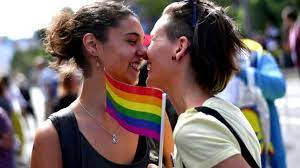

A woman who is emotionally, romantically, or sexually attracted to other women.
2. Gay:

A term often used to describe men who are emotionally, romantically, or sexually attracted to other men. It can also be used as an umbrella term to include all individuals who are attracted to the same gender.
3. Bisexual:
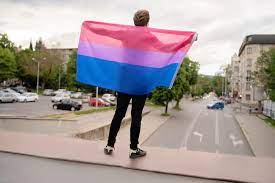
A person who is attracted to individuals of more than one gender. This can include attraction to both men and women, as well as non-binary or genderqueer individuals.
4. Transgender:
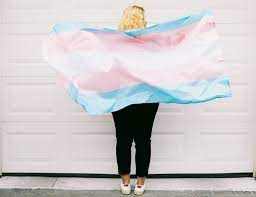
A person whose gender identity differs from the sex assigned to them at birth. For example, a transgender man is someone who was assigned female at birth but identifies and lives as a man. Being transgender is not dependent on undergoing medical procedures or hormone therapy.
5. Queer/Questioning:

“Queer” is an umbrella term that can encompass a range of sexual orientations and gender identities that are not heterosexual or cisgender. Some individuals may use “queer” as a specific identity label, while others use it more broadly to signify their non-normative gender or sexual identities. “Questioning” refers to individuals who are exploring or questioning their sexual orientation or gender identity.
Gender Identity:
Refers to an individual’s internal sense of their own gender, which may or may not align with the sex they were assigned at birth. Gender identity is distinct from biological sex and can include identities such as male, female, non-binary, genderqueer, agender, and more.
Gender Expression:
How an individual presents their gender to others through behavior, clothing, hairstyle, voice, and other outward characteristics. Gender expression may or may not conform to societal expectations or stereotypes associated with one’s assigned sex at birth.
Intersectionality:
LGBTQ identities intersect with other aspects of identity, such as race, ethnicity, class, religion, disability, and nationality. Intersectional approaches recognize the unique experiences and challenges faced by individuals who belong to multiple marginalized groups.
Rights and Advocacy:
The LGBTQ community has long advocated for civil rights, including the right to marry, adopt children, access healthcare without discrimination, and be protected from discrimination in employment, housing, and public accommodations. Activism and advocacy efforts continue to address ongoing challenges and promote greater acceptance and equality.
Health and Well-being:
LGBTQ individuals may face disparities in healthcare access and outcomes, including higher rates of mental health issues, substance abuse, and HIV/AIDS. Culturally competent healthcare providers and supportive services are essential for addressing these disparities and promoting the health and well-being of LGBTQ individuals.
Overall, the LGBTQ community is diverse, resilient, and rich in culture and history. Understanding and respecting the identities and experiences of LGBTQ individuals are essential for promoting equality, diversity, and inclusion in society.
The LGBTQ flag holds specific symbolism and significance-
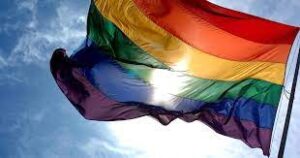
Each color in the LGBTQ flag holds specific symbolism and significance, reflecting different aspects of the LGBTQ community’s history, identity, and values. Here’s a detailed look at the importance of each color:
1. Red:
The color red symbolizes life and represents love. It signifies the passion, energy, and vitality of the LGBTQ community. Red also pays homage to the blood shed by LGBTQ activists in the fight for equality and liberation.
2. Orange:
Orange represents healing and harmony. It signifies the journey toward acceptance, reconciliation, and peace within the LGBTQ community and society at large. Orange also symbolizes solidarity and support for LGBTQ individuals facing discrimination and adversity.
3. Yellow:
Yellow symbolizes sunlight and joy. It represents happiness, optimism, and hope for a brighter future where LGBTQ people can live openly and authentically without fear of discrimination or persecution. Yellow also signifies the resilience and strength of the LGBTQ community.
4. Green:
Green represents nature and growth. It symbolizes progress, renewal, and the ongoing evolution of LGBTQ rights and acceptance. Green also signifies community, unity, and solidarity among LGBTQ individuals and allies in their shared pursuit of equality and justice.
5. Blue:
Blue symbolizes serenity and harmony. It represents peace, tranquility, and the desire for a world where LGBTQ individuals can live free from violence, oppression, and discrimination. Blue also signifies diversity and inclusion within the LGBTQ community.
6. Purple/Violet:
Purple or violet represents spirit and pride. It symbolizes the spirit of activism, empowerment, and resilience within the LGBTQ community. Purple also pays tribute to the contributions and legacy of LGBTQ pioneers, activists, and trailblazers who have fought for LGBTQ rights and liberation.
Together, the colors of the LGBTQ flag create a vibrant and inclusive symbol of pride, unity, and resilience. Each color carries its own unique meaning, but collectively, they represent the diversity, strength, and shared humanity of the LGBTQ community. The flag serves as a powerful reminder of the ongoing struggle for LGBTQ rights and equality, as well as a beacon of hope and solidarity for LGBTQ individuals and allies worldwide.
The Pride flag or rainbow flag-significance –

The LGBTQ flag, commonly known as the Pride flag or rainbow flag, holds significant importance within the LGBTQ community and broader society. Here’s a detailed look at its importance:
1. Symbol of LGBTQ Pride:
The flag serves as a powerful symbol of LGBTQ pride, resilience, and visibility. It represents the diverse range of sexual orientations, gender identities, and experiences within the LGBTQ community.
2. Unity and Inclusivity:
The rainbow flag is inclusive and welcoming, symbolizing unity among LGBTQ individuals and allies regardless of differences in identity, background, or experiences. It promotes solidarity and a sense of belonging within the LGBTQ community.
3. Historical Significance:
The creation of the Pride flag is rooted in LGBTQ history and activism. Designed by artist Gilbert Baker in 1978, the original flag featured eight stripes, each with its own symbolic meaning. Although the design has evolved over time, the flag remains a powerful reminder of the LGBTQ rights movement and the struggles for equality and acceptance.
4. Visibility and Representation:
Displaying the Pride flag raises visibility for LGBTQ people and issues, challenging stigma, discrimination, and marginalization. It helps LGBTQ individuals feel seen and affirmed, especially in spaces where they may face hostility or erasure.
5. Celebration and Festivity:
The rainbow flag is often prominently displayed during LGBTQ Pride Month and at Pride events worldwide. It serves as a colorful and joyful symbol of celebration, empowerment, and self-expression, commemorating the history, achievements, and resilience of the LGBTQ community.
6. Safe Spaces and Support:
In many places, the presence of the Pride flag signifies safe spaces and LGBTQ-friendly environments, such as LGBTQ community centers, bars, businesses, and institutions. Seeing the flag can provide reassurance and support for LGBTQ individuals seeking acceptance and affirmation.
7. Education and Awareness:
The Pride flag helps raise awareness about LGBTQ identities, experiences, and issues, promoting understanding, empathy, and acceptance. It sparks conversations about diversity, inclusion, and the ongoing struggle for LGBTQ rights and equality.
8. Global Impact:
The Pride flag has become a universal symbol of LGBTQ pride and solidarity, transcending national boundaries and languages. Its iconic design is recognized and embraced by LGBTQ communities worldwide, fostering connections and solidarity across cultures and societies.
9. Resilience and Hope:
Despite progress, LGBTQ individuals still face discrimination, violence, and oppression in many parts of the world. The Pride flag serves as a symbol of resilience, hope, and perseverance, inspiring continued efforts to create a world where all LGBTQ people can live openly, authentically, and with dignity.
In summary, the LGBTQ flag is more than just a colorful banner; it represents the rich diversity, history, struggles, and aspirations of the LGBTQ community. Its significance lies in its ability to unite, empower, and uplift LGBTQ individuals while promoting visibility, acceptance, and equality for all.
LGBTQ rights in india –
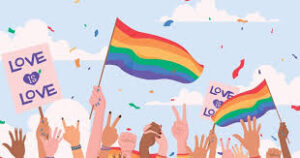
In India, the legal landscape regarding LGBTQ rights has undergone significant changes in recent years. Here are some key points regarding LGBTQ laws in India:
1. Section 377 of the Indian Penal Code:
Section 377 criminalized “unnatural offenses” including consensual sexual acts between same-sex individuals. However, in a historic judgment in September 2018, the Supreme Court of India struck down parts of Section 377 that criminalized consensual homosexual conduct between adults. This decision decriminalized same-sex relations in India.
2. Right to Privacy:
In a separate but related judgment in August 2017, the Supreme Court of India ruled that the right to privacy is a fundamental right protected under the Indian Constitution. This judgment played a crucial role in the subsequent decision to strike down parts of Section 377.
3. Transgender Rights:
In 2014, the Supreme Court of India recognized transgender people as a third gender and affirmed their rights under the Constitution. The court directed the government to take steps to protect the rights of transgender individuals, including access to education, healthcare, and employment.
4. Transgender Persons (Protection of Rights) Act, 2019:
The Indian Parliament passed this legislation in 2019, which aims to protect the rights of transgender persons and prohibit discrimination against them. The law provides for the recognition of transgender identity and the establishment of welfare measures for transgender individuals.
5. Anti-Discrimination Laws:
While there are no specific national laws explicitly prohibiting discrimination based on sexual orientation or gender identity, several states have enacted anti-discrimination policies and guidelines in various sectors, including employment and education. However, comprehensive national legislation addressing discrimination against LGBTQ individuals is still pending.
6. Marriage and Adoption Rights:
Same-sex marriage is not legally recognized in India, and LGBTQ individuals do not have the right to adopt children as a couple. However, single LGBTQ individuals may be eligible to adopt children under certain circumstances.
7. Conversion Therapy:
There are no specific laws banning conversion therapy in India. However, mental health professionals and organizations have called for a ban on this harmful practice, and some states have taken steps to discourage or prohibit its use.
8. Healthcare Access:
LGBTQ individuals in India face challenges in accessing culturally competent healthcare services, including gender-affirming care and HIV/AIDS prevention and treatment. Efforts to improve healthcare access and address discrimination in healthcare settings are ongoing.
Overall, while significant progress has been made in advancing LGBTQ rights in India, challenges remain in areas such as legal recognition, protection against discrimination, and access to healthcare and other essential services. LGBTQ activists and organizations continue to advocate for comprehensive legal protections and social acceptance for LGBTQ individuals in India.
Rights and laws related to LGBTQ one country to another-
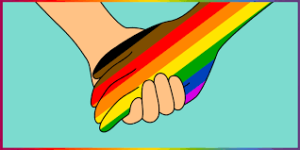

Rights and laws related to LGBTQ individuals vary significantly from one country to another, as well as within different regions and jurisdictions. However, there are several key areas where rights and legal protections for LGBTQ individuals have been the focus of advocacy and legislative efforts:
1. Anti-Discrimination Laws:
Many countries have implemented laws or regulations prohibiting discrimination on the basis of sexual orientation and gender identity in various areas of public life, including employment, housing, education, healthcare, and public accommodations.
2. Marriage Equality:
In an increasing number of countries, same-sex couples have the legal right to marry and enjoy the same legal benefits and recognition as opposite-sex couples. This includes rights related to taxation, inheritance, adoption, and spousal benefits.
3. Adoption and Parenting Rights:
LGBTQ individuals and couples have fought for the right to adopt children and establish legal parent-child relationships. In some jurisdictions, there are specific laws addressing adoption by same-sex couples or LGBTQ individuals.
4. Transgender Rights:
Legal protections for transgender individuals may include the right to change their legal name and gender marker on identity documents, access to gender-affirming healthcare, protection from discrimination in employment and housing, and the recognition of their gender identity in all aspects of life.
5. Hate Crime Legislation:
Some countries have enacted hate crime laws that include sexual orientation and gender identity as protected characteristics, providing enhanced penalties for crimes motivated by bias or prejudice against LGBTQ individuals.
6. Asylum and Refugee Rights:
LGBTQ individuals facing persecution or violence in their home countries may seek asylum or refugee status in countries where they can live safely and openly as LGBTQ individuals. Legal frameworks related to asylum and refugee protection may include provisions specifically addressing LGBTQ persecution.
7. Military Service:
Policies regarding LGBTQ individuals serving openly in the military have evolved in many countries. Repealing discriminatory policies, such as bans on openly gay or transgender service members, has been a significant focus of LGBTQ rights advocacy.
8. Conversion Therapy Bans:
Some jurisdictions have implemented bans or restrictions on conversion therapy, a harmful practice aimed at changing a person’s sexual orientation or gender identity. These laws aim to protect LGBTQ individuals from the psychological and emotional harm associated with conversion therapy.
9. Education and Awareness:
Laws and policies promoting LGBTQ-inclusive education and awareness may be implemented in schools and other educational institutions to address bullying, promote acceptance, and provide support for LGBTQ students.
10. Healthcare Access:
Legal protections may ensure that LGBTQ individuals have equal access to healthcare services, including gender-affirming care, HIV/AIDS prevention and treatment, mental health services, and reproductive healthcare.
It’s important to note that while progress has been made in many areas, there are still significant gaps and disparities in legal protections for LGBTQ individuals worldwide. Advocacy efforts continue to work toward achieving full equality, dignity, and respect for LGBTQ people in all aspects of life.
LGBTQ Celebration Day-

“LGBTQ Celebration Day” is not a specific designated holiday, but rather a term that can refer to various events and occasions held to celebrate the LGBTQ community, raise awareness about LGBTQ issues, commemorate LGBTQ history, and promote LGBTQ rights and equality. Here are some common LGBTQ celebration days and events:
1. Pride Month:

June is widely recognized as Pride Month in many countries around the world. It commemorates the Stonewall riots of June 1969, which were a pivotal moment in the LGBTQ rights movement. Pride Month is marked by various events, including parades, festivals, marches, film screenings, art exhibits, and educational workshops.
2. Pride Parades and Festivals:
Pride parades and festivals are annual events held in cities worldwide to celebrate LGBTQ pride, visibility, and solidarity. These events feature colorful marches, performances, floats, speeches, and community activities. Pride parades often take place during Pride Month or at other times of the year, depending on the location.
3. National Coming Out Day:
Observed on October 11th, National Coming Out Day is a day dedicated to raising awareness about LGBTQ identity and encouraging LGBTQ individuals to come out and share their stories. It aims to promote acceptance, visibility, and support for LGBTQ people.
4. International Day Against Homophobia, Transphobia, and Biphobia (IDAHOT):
Observed on May 17th, IDAHOT is a day dedicated to raising awareness about the discrimination and violence faced by LGBTQ individuals worldwide. It aims to promote respect, equality, and human rights for LGBTQ people.
5. Transgender Day of Visibility (TDOV):
Observed on March 31st, TDOV celebrates the accomplishments and resilience of transgender and gender non-conforming individuals. It raises awareness about transgender rights and challenges stereotypes and discrimination faced by transgender people.
6. Stonewall Riots Anniversary:
June 28th marks the anniversary of the Stonewall riots in 1969, which are widely regarded as the catalyst for the modern LGBTQ rights movement. This day is commemorated with events, discussions, and actions to honor the legacy of the Stonewall uprising and continue the fight for LGBTQ equality.
These are just a few examples of LGBTQ celebration days and events held throughout the year. They play a crucial role in fostering community, promoting visibility, and advocating for LGBTQ rights and inclusion in society.
For more info click here also – https://womaniyas.com/2024/03/09/gita-gopinath-first-deputy-managing-director-of-imf/
